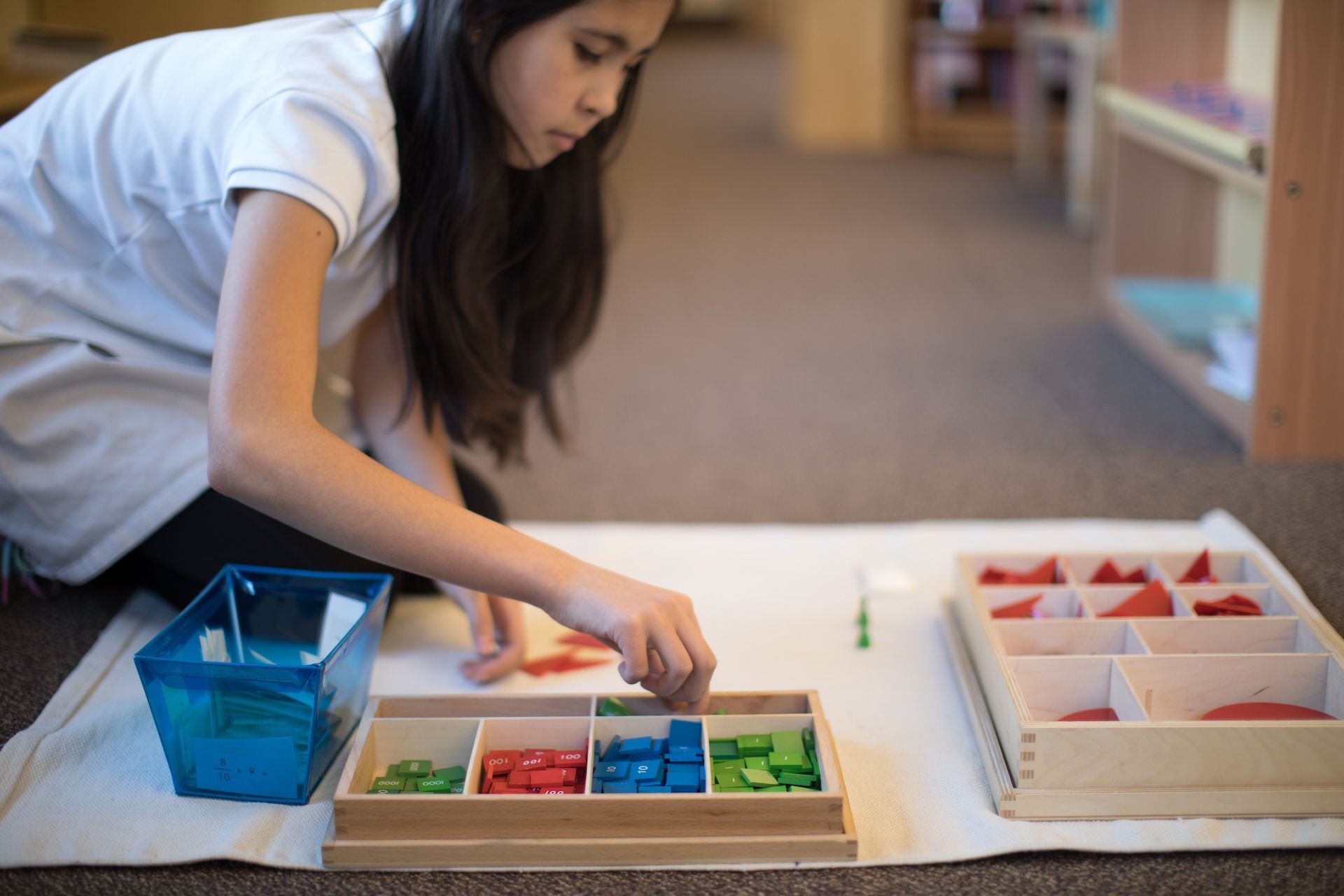


“Never help a child with a task at which he feels he can succeed.” -Dr. Maria Montessori
One of the most critical values of Montessori education is the fostering of independence. Our children need our support, but we are tasked with the gradual release of this support. Doing so is a challenge, for no two children are exactly alike and we are required to observe carefully and be flexible in each moment.
Today, we share some books that may help parents in their journey to foster their children’s ever-expanding independence. We hope you (and your children) will enjoy them!
For toilet learning: Potty by Leslie Patricelli
Simple text, colorful, sweet illustrations, and a clear message: everybody has bodily waste, and there is a time to start using the toilet instead of going in a diaper. In this book, the child observes what their pets do, then decides to try and use the potty. After a long time of sitting and waiting, they finally find success! The story ends with a proud baby and parents, and the introduction of many fun pairs of undies.
For brushing teeth: Brush, Brush, Brush by Alicia Padron
Ideal for reading to infants and toddlers who are just learning about brushing for the first time, this book covers the basics using few words that get straight to the point. The illustrations are charming and children will appreciate them; we love the diversity represented.
For tying shoes: Red Lace, Yellow Lace by Mike Casey
We love this book in part because it mirrors a classic Montessori material in a way that makes it accessible for the home. Our primary classrooms have dressing frames that teach children how to complete all sorts of clothing fastening techniques. This book, written in a catchy rhyming style, includes actual colored laces for children to practice on.
For cleaning the house: Dust Everywhere by Robert Rosen, illustrated by Chiara Fiorentino
Zoe and Zak attempt to clean the house, but in the beginning, Zak makes more mess than they started with. A frustrated but patient Zoe helps him vacuum, sweep, and mop, and they work together until the house is sparkling.
For doing laundry: Henry Helps with Laundry by Beth Bracken, illustrated by Ailie Busby
Henry lives with his mom, dad, and little sister Penny. They all wear clothes, and those clothes tend to get dirty. One day, Henry’s mom asks him for help with the laundry, he happily agrees. He gets to work sorting, putting the clothes in the washing machine, and rescuing a nearly-forgotten pair of pajamas.
For cooking: Cooking Class by Deanna F. Cook
Ideal for elementary-aged children, this book contains lots of appealing recipes with step-by-step directions and photographs. Winner of the Parent’s Choice Award, this book also teaches children about how to safely use kitchen tools and the importance of cleaning up.
For woodworking: Wonderful Woodworking for Children by Susan Scheibenzuber
Scheibenzuber is a Montessori teacher, so this book was created with Montessori children specifically in mind. She emphasizes the use of real tools, child-appropriate projects, and uses photos to illustrate each step of the process. Can you imagine the pride and self-confidence a child might feel after making their own table and chair?
For caring for pets: Dog Training for Kids by Vanessa Estrada Marin, illustrated by Alisa Harris and Complete Cat Care Manual by Dr. Andrew Edney
Caring for pets is a big responsibility, and many parents have agreed to take one on only to discover themselves doing most of the work several months later. If your child shows genuine interest in getting a cat or a dog (or any other pet for that matter), this wonderful opportunity should be taken seriously, and a book or two can help them learn the basics. While they will still need help, children can do so much in terms of feeding, walking, grooming, training, and cleaning up after their furry friends.
For managing money: Finance 101 for Kids: Money Lessons Children Cannot Afford to Miss by Walter Andal
During their younger years, practical life activities consist of tasks like learning to sweep and dress oneself. While we may stop using the term practical life as children age, it never really goes away and just continues to morph into different skills. This book teaches older children everything they need to know about money and finances, from how the concept of money originated to how to make money, save money, invest money, and how credit works.
For learning to drive: The Driving Book: Everything New Drivers Need to Know but Don’t Know to Ask by Karen Gravell, illustrated by Helen Flook
While nothing can replace the hours of practice behind the wheel, having a book or two to learn all the important nuances about being a driver can be helpful, too! This book isn’t so much a how-to drive guide as it is a great reference. It includes information about caring for a car, getting gas, driving in various types of weather, what it means to be driving impaired, and what to do in case of accidents and breakdowns.
Warm regards,
Candice Lin, Director


We invite you to visit our school, meet the teachers, and observe the children in their classrooms. We encourage you to ask questions and learn about the opportunities available at all levels of our programs.
LakeCreek Montessori International School
10127 Lake Creek Parkway, Austin, Texas, 78729
Powered by Nido Marketing